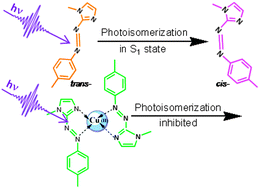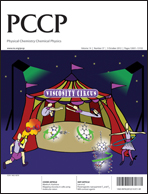Photoisomerization dynamics of N-1-methyl-2-(tolylazo) imidazole and the effect of complexation with Cu(ii)
Abstract
Azo-compounds containing an imidazole moiety have the potential to photoregulate biofunctions, such as gene-expression and enzymatic action. Photoinduced isomerization of the azo-backbone is the vital process for such applications, but the photoisomerization dynamics of azo-imidazole compounds has not been well explored. We investigated the photoisomerization dynamics of trans-N-1-methyl-2-(tolylazo) imidazole (trans-MTAI) using femtosecond transient absorption


 Please wait while we load your content...
Please wait while we load your content...